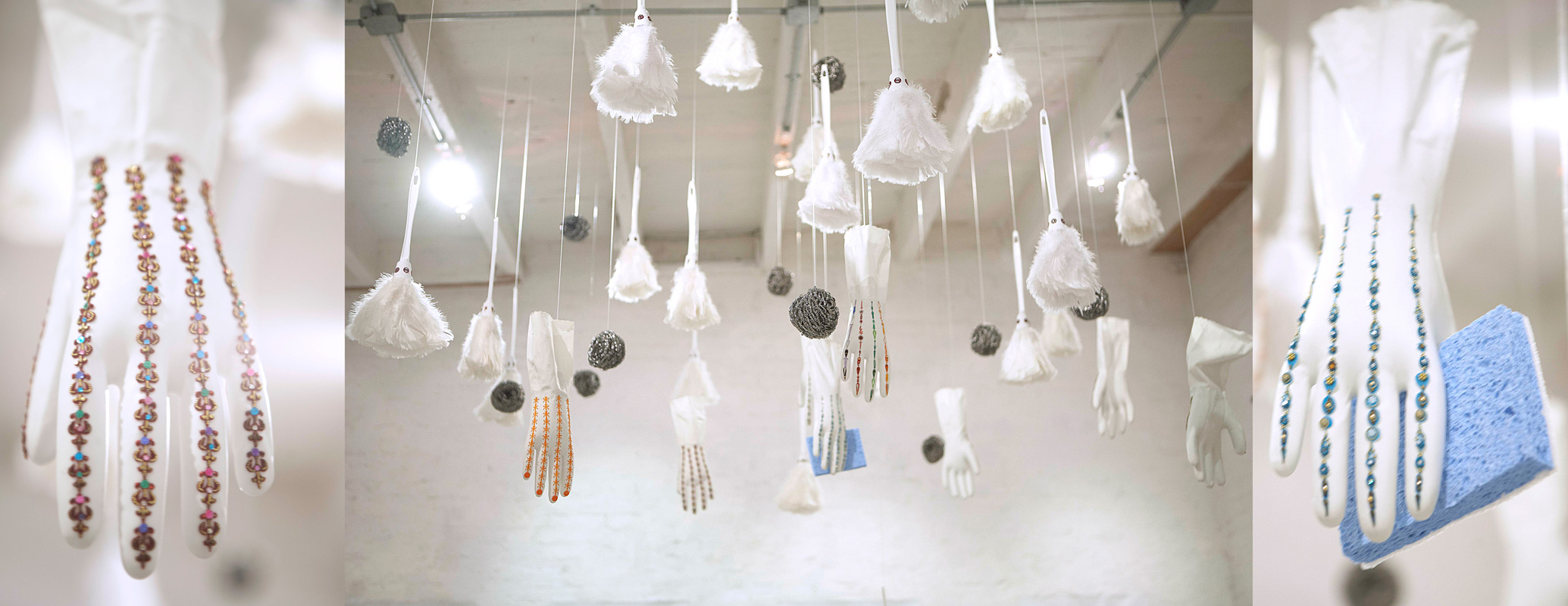CLEANING FOR THE MAN
Installation with cleaning gloves with bindis,
dusters with bindis,metal scrubing and one sponge.
In most of the case as a married women you have to clean the house even if you have people to help you , you still have to take care of it.
bindis: artful decoration or sexist symbol of male ownership
Indian bindis are elaborate decorative mini pieces of costume jewelry, traditionally worn by married women to display their status within society.
A bindi (from Sanskrit bindu, meaning "a drop, small particle, dot") is a forehead decoration worn in South Asia (particularly India) and Southeast Asia.. Traditionally it is a dot of red color applied in the center of the forehead close to the eyebrows, but it can also consist of a sign or piece of jewelry worn at this location.
The bindi is arguably the most visually fascinating of all forms of body decoration. Hindus attach great importance to this ornamental mark on the forehead between the two eyebrows -- a spot considered a major nerve point in human body since ancient times. Also loosely known as 'tika', 'pottu', 'sindoor', 'tilak', 'tilakam', and 'kumkum', a bindi is usually a small or a big eye-catching round mark made on the forehead as adornment.
In southern India, girls choose to wear a bindi, while in other parts of India it is the prerogative of the married woman. A red dot on the forehead is an auspicious sign of marriage and guarantees the social status and sanctity of the institution of marriage. The Indian bride steps over the threshold of her husband's home, bedecked in glittering apparels and ornaments, dazzling the red bindi on her forehead that is believed to usher in prosperity, and grants her a place as the guardian of the family's welfare and progeny.
A Hot Spot!
The area between the eyebrows, the sixth chakra known as the 'agna' meaning 'command', is the seat of concealed wisdom. It is the centre point wherein all experience is gathered in total concentration. According to the tantric cult, when during meditation the latent energy ('kundalini') rises from the base of the spine towards the head, this 'agna' is the probable outlet for this potent energy. The red 'kumkum' between the eyebrows is said to retain energy in the human body and control the various levels of concentration. It is also the central point of the base of the creation itself — symbolizing auspiciousness and good fortune.

